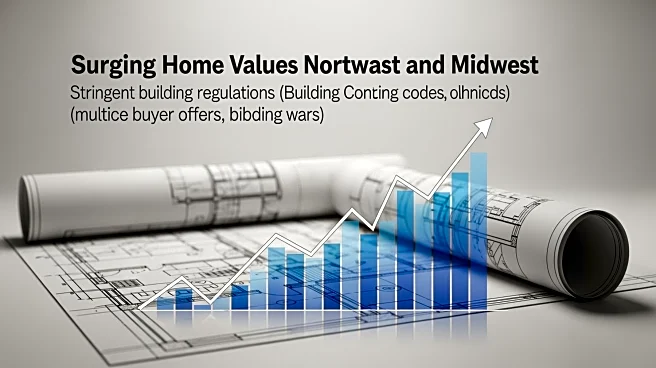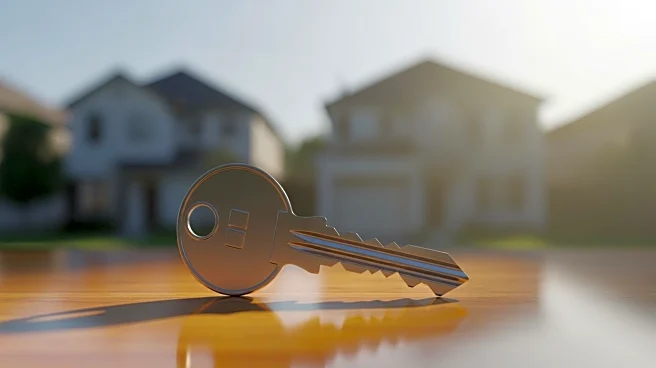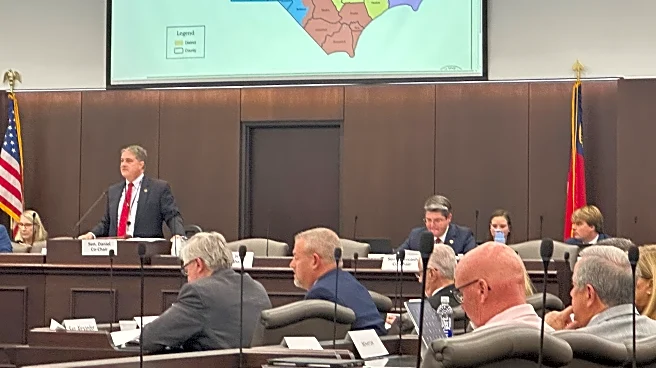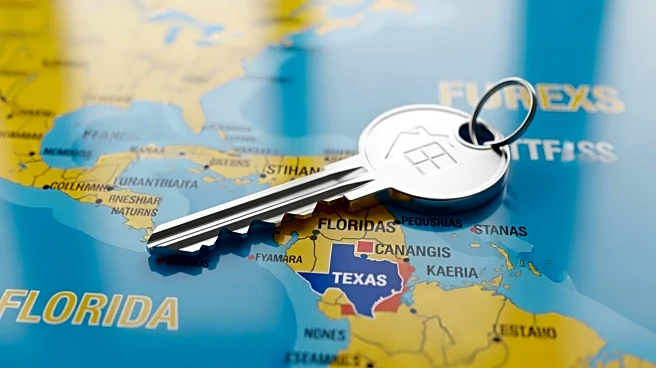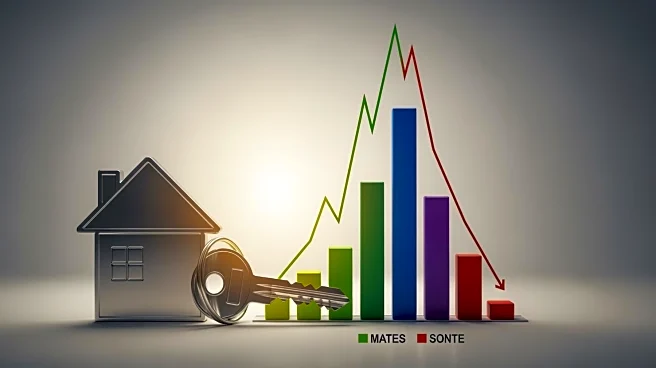What's Happening?
Home values in the United States are experiencing significant increases, particularly in the Northeast and Midwest regions. According to a report by Cinch Home Services, Wyoming has seen the largest increase in home value this year, with a 5.17% rise
from August 2024 to August 2025. The report highlights that stringent building regulations and high competition among buyers are key factors driving these increases. In the Northeast, states like New York and Connecticut have seen substantial growth, with New York experiencing a $20,179 increase in average home value over the past year. Connecticut's home values have surged by 58.55% over the last five years. The Midwest is also seeing similar trends, with states like Wisconsin and Ohio showing notable increases. The report suggests that the limited ability of contractors to quickly respond to demand due to regulatory constraints is contributing to the rising home values.
Why It's Important?
The rising home values in the Northeast and Midwest have significant implications for the U.S. housing market and economy. As home prices increase, affordability becomes a concern for potential buyers, particularly in regions with stringent building regulations. This trend could lead to increased financial strain on middle-class families and first-time homebuyers. Additionally, the surge in home values may impact local economies by influencing property taxes and housing-related spending. The competitive housing market in these regions could also drive demographic shifts, as people may relocate to areas with more affordable housing options. Furthermore, the disparity in home value trends between regions, such as the decline in Florida, highlights the complex dynamics of the U.S. housing market, influenced by factors like climate change and economic policies.
What's Next?
As home values continue to rise in the Northeast and Midwest, stakeholders such as policymakers, real estate developers, and financial institutions may need to address the challenges of housing affordability and supply constraints. Potential policy responses could include revising building regulations to allow for more rapid construction and increasing incentives for affordable housing development. Real estate developers might explore innovative construction methods to meet demand more efficiently. Financial institutions could adjust mortgage lending practices to accommodate the changing market dynamics. Additionally, the ongoing impact of climate change on housing demand, particularly in regions like Florida, may prompt further research and policy initiatives to mitigate risks and support sustainable housing development.
Beyond the Headlines
The increase in home values in the Northeast and Midwest also raises ethical and cultural considerations. The growing disparity in housing affordability could exacerbate social inequalities, as lower-income families may be priced out of desirable areas. This trend could lead to increased gentrification and displacement of long-standing communities. Culturally, the shift in housing markets may influence regional identities and community cohesion, as new residents bring different perspectives and lifestyles. Long-term, these changes could alter the cultural landscape of affected regions, impacting everything from local traditions to political dynamics.
